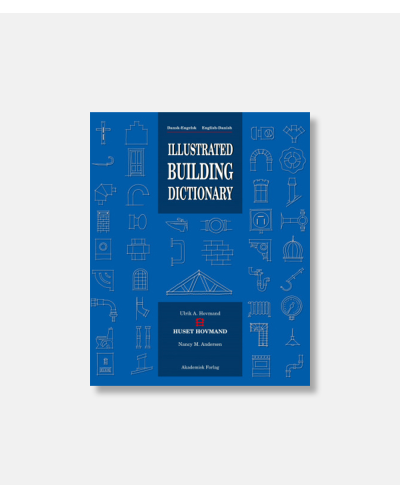Gift ideas for students There are 187 products.
Why Do Architects Wear Black? 2nd edition
Why Do Architects Wear Black? 2nd edition. New extended edition of the cult book. Collection of hand-written explanations in an A6 notebook. Expanded by 17 new statements
Architecture for Housing
Architecture for Housing - Understanding the value of design through 14 case studies. New fundamentals for designing future-oriented housing. In-detail portraits of 14 impactful multi-unit dwelling projects by international architecture offices
Værelser til tilværelser - fra, om og med Bygningskunstens Helhedsdannelser
Udkommer den 10. februar! Værelser til tilværelser - fra, om og med Bygningskunstens Helhedsdannelser
Rummets poetik
Introtilbud! Rummets poetik. Rummets poetik er et fænomenologisk hovedværk om vores intime rum, vores hjem. Den udkom oprindeligt i 1957 og foreligger hermed i dansk oversættelse. Introduktion ved Gilles Hieronimus
Between Silence and Light
Between Silence and Light. Updated with a new preface, this classic work is a major statement on human creativity, showing us Louis Kahn as architect, visionary, and poet.
Juhani Pallasmaa
Juhani Pallasmaa - Thinking Hand: Existential and Embodied Wisdom in the Architecture. På vej til lager
Basics Architectural Presentation (kompendium) 2nd edition
Basics Architectural Presentation (kompendium) 2nd edition. The study companion for architecture representation,including the new volume Freehand Drawing. Indispensable tool for first-year students
250 Things an Architect Should Know
250 Things an Architect Should Know. From iconic architect and critic Michael Sorkin comes a joyful celebration of architecture and city-making, told through his famous list, in one beautiful, illustrated book.
Illustrated Building Dictionary
Illustrated Building Dictionary. Et rigt illustreret og let forståeligt dansk-engelsk opslagsværk inden for arkitektur og byggeteknik. Bogen har ordregister fra dansk til engelsk og et fra engelsk til dansk med mere end 4.300 danske fagtermer og mere end 6.200 engelske termer.
Urban Grids - Handbook for Regular City Design
Urban Grids: Handbook for Regular City Design. Emphasizes the value of the regular city as an open form for city design, and specifically insists that the grid has the unique capacity to absorb and channel urban transformation flexibly and productively.
Modern Construction Handbook, 6th ed.
Modern Construction Handbook, 6th ed.. New edition of the popular handbook












